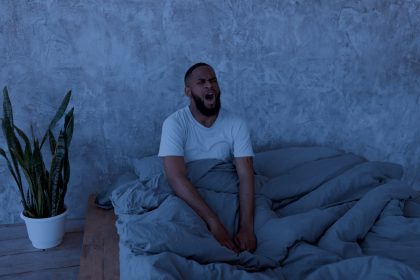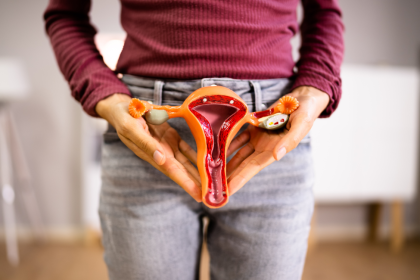Many people struggle with sleep issues, tossing and turning night after night despite trying numerous remedies from melatonin supplements to meditation apps. While these approaches have merit, growing research points to a critical but frequently overlooked factor in sleep quality: vitamin D levels. This essential nutrient, primarily obtained through sunlight exposure, plays a fascinating role in regulating sleep cycles and quality that deserves far more attention than it typically receives.
The connection between vitamin D and restorative sleep offers new hope for those battling insomnia, sleep fragmentation, or simply poor sleep quality. Understanding this relationship could transform your nights and, consequently, your days.
The surprising link between vitamin D and sleep architecture
Vitamin D isn’t just for bone health—it functions more like a hormone than a typical vitamin in the body. Receptors for vitamin D appear throughout the brain in areas specifically involved in sleep regulation, including the hypothalamus which houses the suprachiasmatic nucleus—our master circadian clock.
Research from the Department of Psychobiology at Federal University of São Paulo revealed that vitamin D directly influences sleep architecture—the pattern and cycling of different sleep stages throughout the night. When vitamin D levels fall below optimal ranges, both REM (rapid eye movement) and slow-wave sleep—the most restorative phase—diminish in quality and duration.
This disruption to sleep architecture explains why vitamin D deficiency often manifests as both difficulty falling asleep and trouble staying asleep. The vitamin helps maintain the delicate balance between sleep-promoting brain chemicals like GABA and wake-promoting neurotransmitters such as glutamate and norepinephrine.
Perhaps most intriguing, vitamin D appears to influence melatonin production, with research from the University of Manchester showing that healthy vitamin D levels help maintain proper melatonin rhythm—the hormone that signals to your body that it’s time to sleep. This suggests that taking melatonin supplements while remaining vitamin D deficient addresses a symptom rather than a potential underlying cause.
Why so many people lack this critical sleep nutrient
Despite its importance, vitamin D deficiency rates have reached epidemic proportions, with an estimated 42% of American adults showing insufficient levels. Several factors contribute to this widespread deficiency:
Modern indoor lifestyles have dramatically reduced our sun exposure compared to previous generations. The average American now spends over 90% of their time indoors, severely limiting natural vitamin D production. This indoor tendency particularly affects sleep since morning sunlight exposure helps synchronize our circadian rhythms.
Northern latitudes present geographical challenges, especially during winter months. Anyone living north of the line from San Francisco to Philadelphia cannot produce adequate vitamin D from November through March regardless of time spent outdoors. The sun simply doesn’t rise high enough in the sky for UVB rays (which trigger vitamin D production) to penetrate the atmosphere.
Sunscreen, while important for preventing skin cancer, blocks the very UVB rays needed for vitamin D synthesis. SPF 15 reduces vitamin D production by approximately 93%. This creates a health dilemma with no perfect solution, though strategic, limited sun exposure before applying sunscreen may offer a reasonable compromise.
Aging skin produces significantly less vitamin D given the same amount of sun exposure. After age 70, vitamin D production capacity drops to approximately 30% of what it was at age 20. This may partially explain why sleep complaints increase dramatically with age.
Darker skin tones contain more melanin, which naturally blocks UVB rays. People with darker skin may need 3-5 times longer sun exposure than those with fair skin to produce the same amount of vitamin D, creating significant disparity in deficiency rates.
The sleep disorders most affected by vitamin D status
Research increasingly shows that specific sleep problems respond particularly well to vitamin D optimization. Understanding which conditions show the strongest connection can help prioritize testing and supplementation decisions.
Obstructive sleep apnea severity correlates strongly with vitamin D levels in multiple studies. A landmark study published in the Annals of the American Thoracic Society found that 98% of sleep apnea patients had abnormally low vitamin D levels, with the deficiency worsening with greater apnea severity. The relationship appears bidirectional—sleep apnea reduces vitamin D levels, while low vitamin D worsens sleep-disordered breathing.
Restless legs syndrome, that irresistible urge to move the legs that often peaks in the evening, shows a striking correlation with vitamin D status. Research from the journal Sleep and Breathing demonstrated that vitamin D supplementation reduced RLS symptoms by over 60% in deficient patients after just 12 weeks of treatment.
Insomnia, particularly sleep maintenance insomnia (difficulty staying asleep), improves significantly with vitamin D normalization. A double-blind study from the Journal of Clinical Sleep Medicine found that participants receiving vitamin D experienced 1.5 hours more sleep per night compared to the placebo group, with improvements beginning approximately three weeks after starting supplementation.
Excessive daytime sleepiness often persists despite adequate sleep duration in people with suboptimal vitamin D. The hormone’s role in brain energy metabolism and neurotransmitter balance likely explains why correcting deficiency often resolves daytime fatigue even when sleep quantity appears sufficient.
How vitamin D works its magic on sleep quality
The mechanisms through which vitamin D influences sleep extend well beyond its effects on melatonin production, revealing complex interactions throughout the nervous system.
Vitamin D regulates calcium channels in brain cells, which profoundly influences how easily neurons can fire. This calcium channel activity affects the transition between wakefulness and sleep states. When vitamin D levels drop, calcium regulation becomes erratic, making the brain less able to “switch off” when appropriate.
Inflammation reduction represents another key pathway, as vitamin D acts as a powerful anti-inflammatory agent in the brain. Chronic low-grade inflammation disrupts sleep architecture, and vitamin D’s ability to suppress inflammatory cytokines like IL-6 and TNF-alpha directly improves sleep continuity and depth.
Stress hormone regulation improves with optimal vitamin D status. The vitamin helps modulate cortisol production and rhythm, preventing the evening cortisol spikes that frequently contribute to sleep onset difficulties. This effect becomes particularly important in our chronically stressed society.
Neurotransmitter production depends partially on vitamin D availability. The vitamin facilitates synthesis of both serotonin (which converts to melatonin) and GABA (the brain’s main inhibitory chemical). These neurotransmitters promote relaxation and sleep initiation, explaining why deficiency often manifests as racing thoughts at bedtime.
Muscle relaxation improves with adequate vitamin D, reducing nocturnal leg cramps, restlessness, and tension that frequently disrupt sleep. The vitamin’s role in calcium-magnesium balance in muscle tissue explains this often-overlooked benefit.
Finding your optimal vitamin D level for sleep improvement
Determining your current vitamin D status requires a simple blood test measuring 25-hydroxyvitamin D levels, the form that circulates in your bloodstream. While technically available through direct-to-consumer testing, working with a healthcare provider offers advantages in interpreting results and developing an appropriate supplementation strategy.
The optimal range for sleep benefits appears higher than the standard reference ranges used by many laboratories. Sleep research suggests targeting 40-60 ng/mL (100-150 nmol/L), while many labs consider anything above 30 ng/mL “sufficient.” This discrepancy explains why some people with “normal” results still experience deficiency symptoms.
Supplementation approaches vary based on current levels and individual factors. For moderate deficiency (15-30 ng/mL), a typical protocol might include 5,000 IU daily for three months followed by retesting. Severe deficiency (below 15 ng/mL) often requires higher therapeutic doses under medical supervision before transitioning to maintenance levels.
The vitamin D3 form (cholecalciferol) shows significantly better absorption and utilization than vitamin D2 (ergocalciferol), making it the preferred supplement choice. Look for products tested by independent labs to verify potency and purity, as supplement quality varies dramatically.
Timing your dose with your largest meal of the day containing some fat improves absorption by approximately 30% compared to taking it on an empty stomach. Morning supplementation aligns best with natural vitamin D production patterns but creates less sleep disruption risk than evening dosing.
Beyond supplements: Lifestyle approaches to optimize vitamin D for better sleep
While supplementation provides the most reliable way to correct deficiency, several lifestyle strategies can help maintain optimal levels and enhance vitamin D’s sleep-promoting effects.
Morning sunlight exposure serves a dual purpose—it both increases vitamin D production and directly regulates circadian rhythms through a separate pathway involving melanopsin receptors in the eyes. Even on cloudy days, morning outdoor time provides significant benefits. Aim for 10-15 minutes without sunscreen if your skin type and local UV index permit.
Dietary sources, while insufficient alone to correct deficiency, support maintenance of healthy levels. Fatty fish like salmon and mackerel provide substantial amounts (approximately 500-1,000 IU per serving), while egg yolks, cheese, and mushrooms exposed to UV light offer smaller amounts. For those avoiding animal products, vitamin D-fortified plant milks provide an alternative source.
Vitamin K2 partners with vitamin D to ensure proper calcium utilization, directing it to bones rather than soft tissues. Including K2-rich foods like fermented vegetables, certain cheeses, and pastured animal products enhances vitamin D’s safety and effectiveness, particularly at higher supplementation levels.
Weight management impacts vitamin D status significantly, as the vitamin is fat-soluble and becomes sequestered in adipose tissue. Studies show that identical sun exposure or supplementation produces lower blood levels in people with obesity. For those carrying excess weight, higher maintenance doses may be necessary to achieve optimal levels.
Reducing evening blue light exposure complements vitamin D’s effects on melatonin. The combination of healthy vitamin D levels and minimized blue light from screens creates ideal conditions for robust melatonin production and release when needed for sleep initiation.
Case studies: Real-world sleep transformations through vitamin D optimization
The scientific research on vitamin D and sleep finds powerful confirmation in clinical case studies documenting remarkable improvements in sleep quality:
A 42-year-old woman with treatment-resistant insomnia discovered her vitamin D level measured just 18 ng/mL despite living in a sunny climate. After three months of supplementation bringing her level to 52 ng/mL, her sleep efficiency (percentage of time in bed spent actually sleeping) improved from 67% to 92%, and her sleep latency (time to fall asleep) decreased from 62 minutes to 7 minutes.
A 68-year-old man with severe sleep apnea continued experiencing excessive daytime sleepiness despite CPAP therapy. Testing revealed a vitamin D level of 14 ng/mL. Six months after beginning supplementation, not only did his daytime alertness normalize, but his follow-up sleep study showed his apnea episodes had decreased by 28% despite no other treatment changes.
A college student suffering from delayed sleep phase syndrome (naturally falling asleep and waking very late) found her sleep timing normalized after addressing vitamin D deficiency combined with morning light exposure. Her melatonin onset shifted nearly three hours earlier, allowing her to fall asleep by 11 PM rather than her previous 2 AM pattern.
These cases highlight the importance of considering vitamin D status when conventional approaches to sleep problems yield unsatisfactory results. Many sleep specialists now include vitamin D testing in their standard evaluation protocols, recognizing its foundational role in sleep regulation.
What to expect when correcting vitamin D deficiency for sleep
Understanding the typical timeline and experience of correcting vitamin D deficiency helps set realistic expectations for sleep improvements:
Initial blood level increases occur relatively quickly with supplementation, with most people seeing significant changes within 4-6 weeks. However, the full effects on sleep typically take longer to manifest as the body’s tissues gradually respond to improved vitamin D status.
Sleep improvements often follow a specific progression. Most people notice reduced nighttime waking first (typically after 3-4 weeks of supplementation), followed by easier sleep initiation (4-6 weeks), with improvements in sleep depth and morning refreshment taking longest (8-12 weeks).
Dosage adjustments may be necessary based on follow-up testing and symptom response. Vitamin D metabolism varies dramatically between individuals due to genetic factors, with some people requiring significantly higher maintenance doses than others to maintain optimal levels.
Complementary nutrients including magnesium, vitamin K2, zinc, and boron enhance vitamin D utilization and should be included in comprehensive approaches to sleep improvement. Magnesium deficiency, in particular, commonly coexists with low vitamin D and independently affects sleep quality.
The full restoration of healthy sleep architecture may require patience, especially for those with longstanding deficiency. The most dramatic improvements typically occur within the first three months, but subtle enhancements in sleep quality often continue for six months or longer after reaching optimal blood levels.
By understanding vitamin D’s critical yet overlooked role in sleep regulation, those struggling with poor sleep quality gain valuable insights into a potentially transformative approach. While not a universal cure for all sleep disorders, optimizing this essential nutrient represents a foundational step that too often goes unaddressed in the pursuit of restorative sleep.














